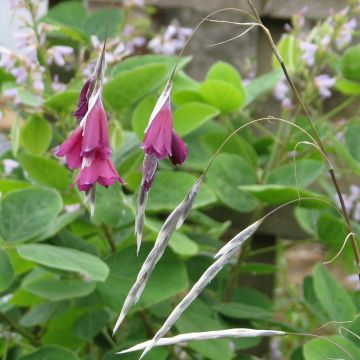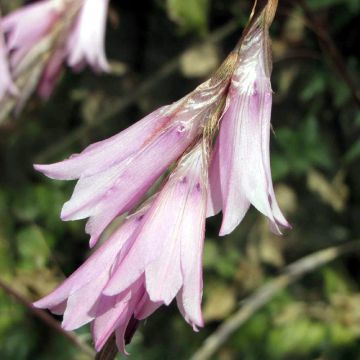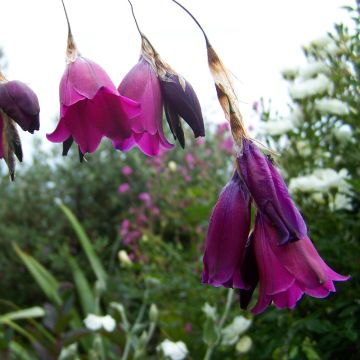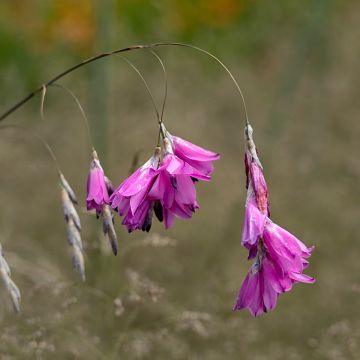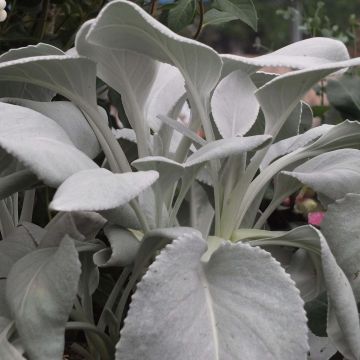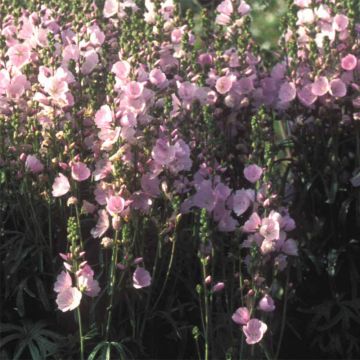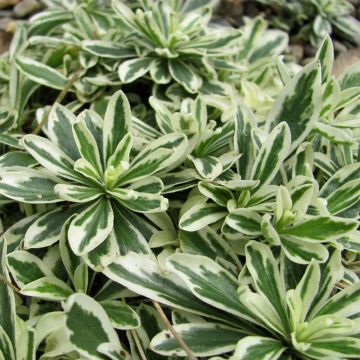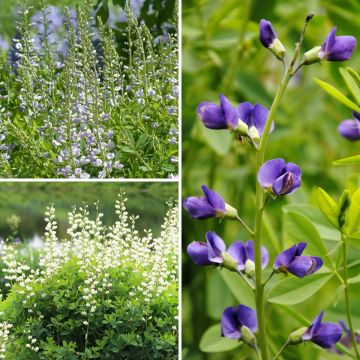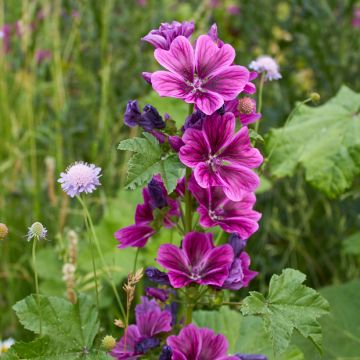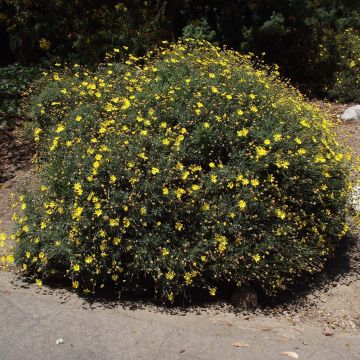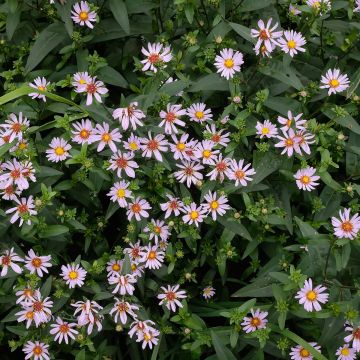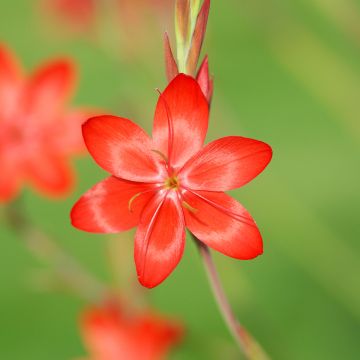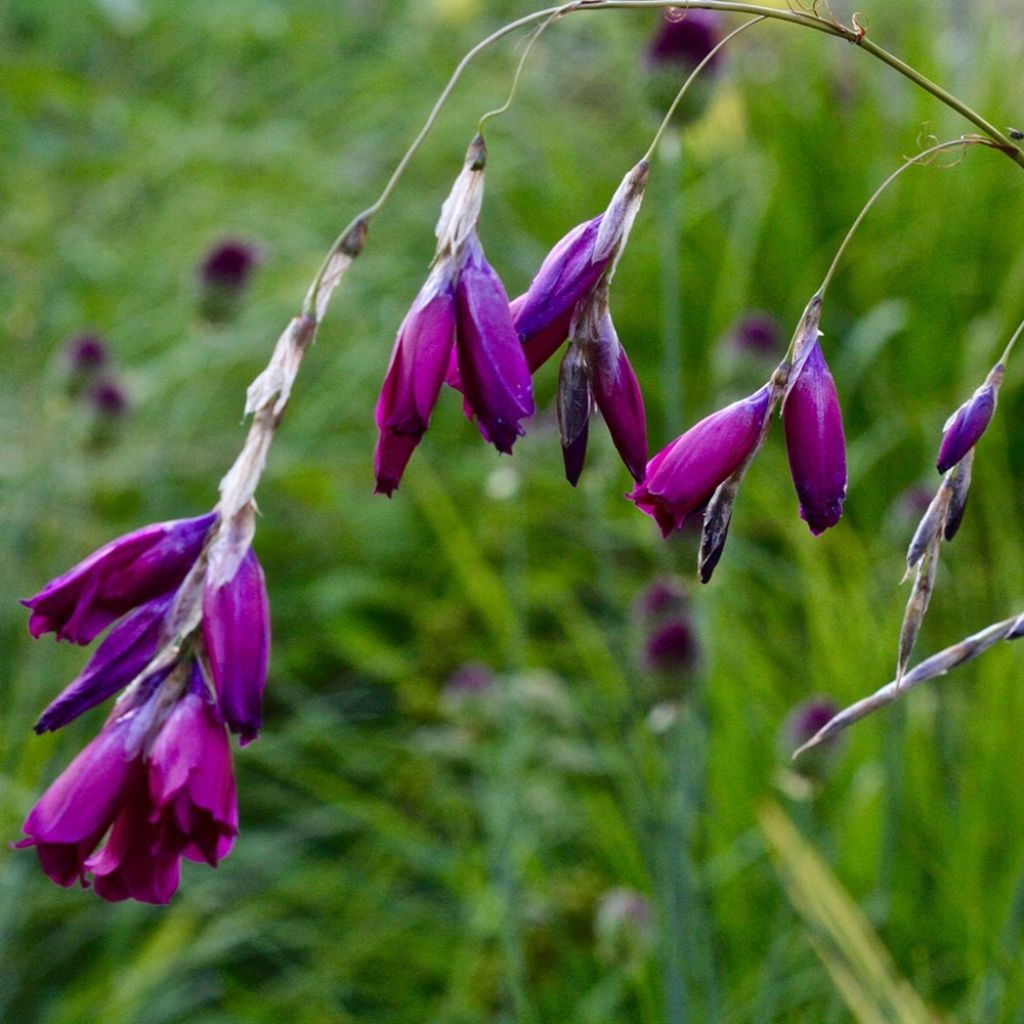

Dierama Dark Cerise - Canne à pêche des anges
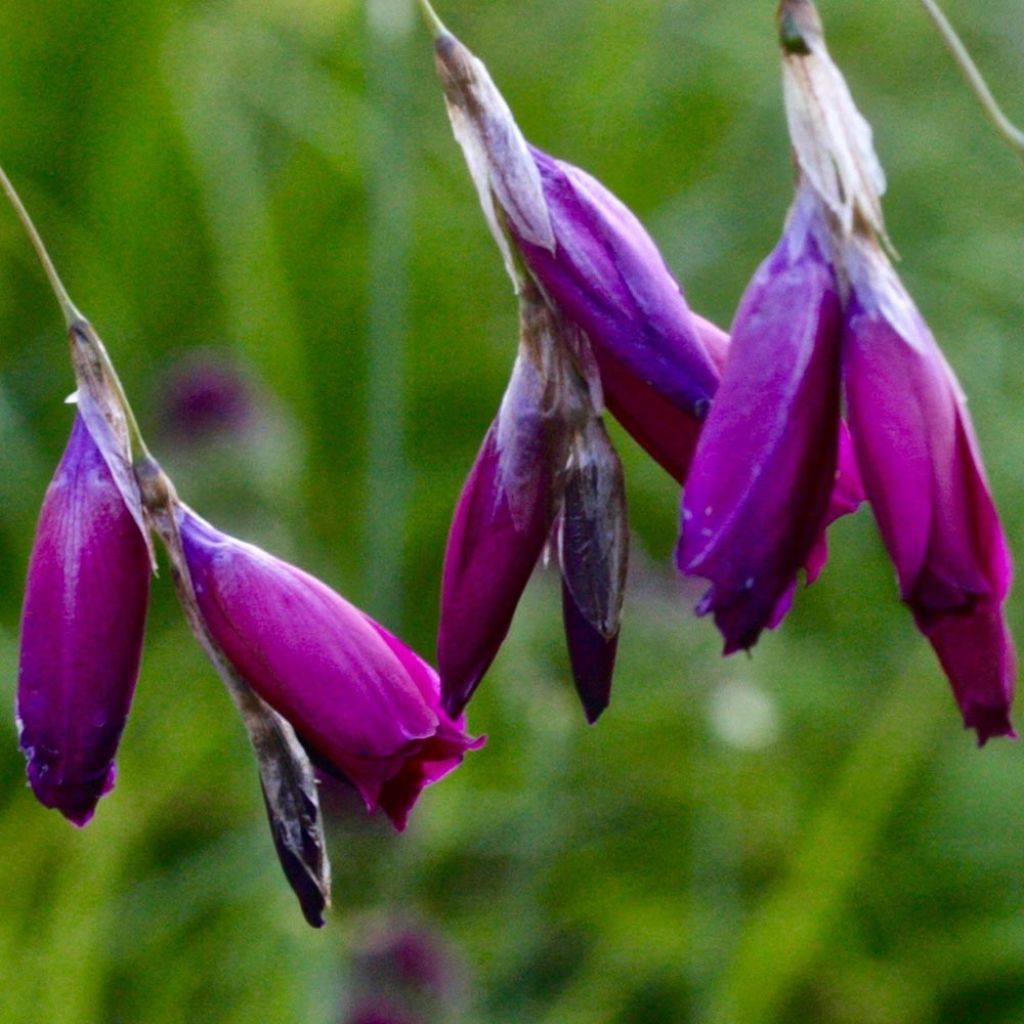

Dierama Dark Cerise - Canne à pêche des anges
Dierama pulcherrimum Dark Cerise
Dierama pulcherrimum Dark Cerise
Angel's fishing Rod, Wedding bells
This item cannot be shipped to the selected country
Delivery charge from €5.90
More information
Schedule delivery date,
and select date in basket
This plant carries a 12 months recovery warranty
More information
We guarantee the quality of our plants for a full growing cycle, and will replace at our expense any plant that fails to recover under normal climatic and planting conditions.
From €5.90 for pickup delivery and €6.90 for home delivery
Express home delivery from €8.90.
Does this plant fit my garden?
Set up your Plantfit profile →
Description
Dierama pulcherrimum 'Dark Cerise' is a variety of angel's fishing rod with deep cherry-red flowers. This perennial plant with corms is very graceful with its cluster of upright and narrow, grass-like leaves. From June to August, its long and flexible stems arch and sway under the weight of the clusters of bell-shaped flowers and the effect of the wind. This spectacular but less hardy perennial appreciates warm and sunny locations. It deserves to be planted in a sheltered position, along a south-facing wall or as a standalone with foliage plants. It grows in light, well-drained, moist to wet soil with a thick mulch outside regions with mild climate.
Dierama pulcherrimum is a slow-growing plant with corms belonging to the Iridaceae family. This perennial is native to wet and marshy meadows in East Africa and South Africa. Its vegetation is more or less evergreen in winter depending on the climate. The 'Dark Cerise' variety is hardy up to approximately -7°C (19.4°F), in very well-drained soil. It resembles a grass, with an upright tuft composed of green leaves reaching a minimum height of 50 cm (20in) and, after many years, 60 cm (24in) in diameter at the base. In summer, from July to August, long, thin and sturdy floral stems, reaching up to 1.20 m (4ft) in height, emerge from the foliage, gracefully bending under the weight of the flowers. They bear branched spikes of campanulate or tubular flowers, 6 cm (2in) long, which bloom one after the other. The nectar-rich flowers attracts many pollinating insects. The fertilised flowers give way to small ovoid capsules containing numerous small, hard brown seeds, which will germinate after the winter cold. Plants grown from seeds will flower after 5 to 7 years of cultivation.
Invite Diarama 'Dark Cerise' into your garden, as it deserves a prominent place planted in a large pot on the patio, placed in isolation, along a pathway, or in a bed not far from water. Dierama pulcherrimum is very well suited to coastal areas where it appreciates the humid atmosphere and can withstand the salty sea breeze. This plant looks stunning in a bed alongside grasses (Miscanthus, Eragrostis, Panicum), Phormium, lychnis, or along a pathway, especially when the light shines through its flowered vegetation from behind. Near a pond, it can be paired, for example, with loosestrifes, lamb's ears, purple phormium, Gomphostigma virgatum Silver Butterfly, or even meadow rues (Thalictrum delavayi, Thalictrum flavum ssp. Glaucum).
Report an error about the product description
Dierama pulcherrimum Dark Cerise in pictures
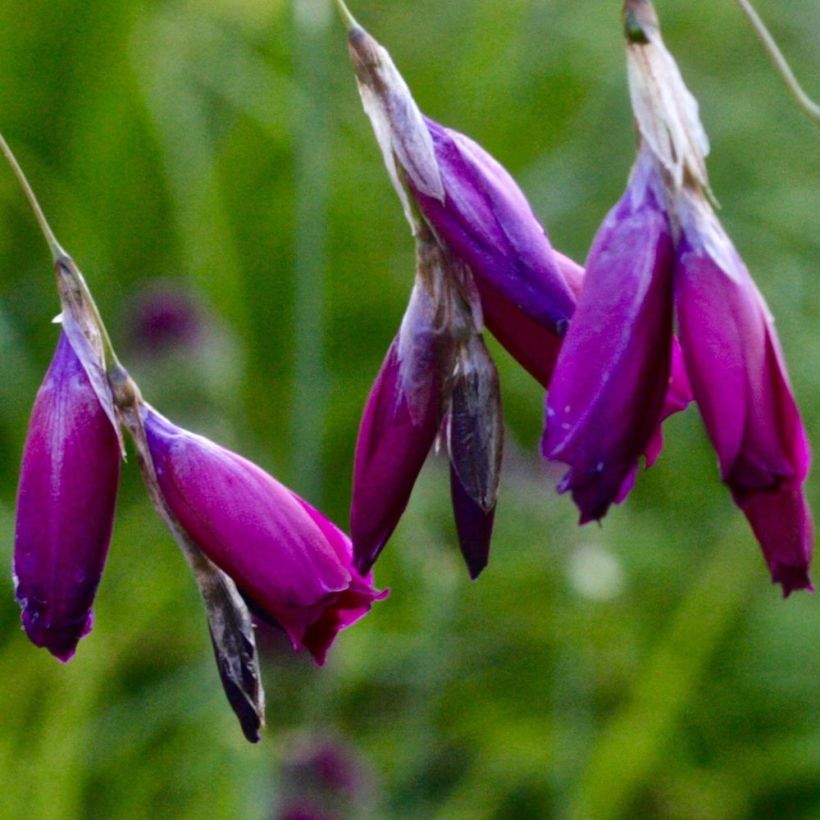

Flowering
Foliage
Plant habit
Botanical data
Dierama
pulcherrimum
Dark Cerise
Iridaceae
Angel's fishing Rod, Wedding bells
Cultivar or hybrid
Other Dierama
Planting and care
Plant your Dierama plucherrimum in a sunny spot, in light, well-prepared, humus-rich soil, which is enriched with coarse sand but remains moist in summer, but well-drained to avoid corm rot in waterlogged soil. This plant does not tolerate excessive limestone in the soil. Its cultivation is a bit delicate during the first few years, where it will require careful attention, but once established, the plant is less demanding in terms of water and better able to withstand normal winters. Hardy down to -10°C (14°F), we recommend protecting your plant in winter with a thick mulch, but you can also grow it in large pots that you will shelter in winter. In pots, monitor watering during the growing season. In winter, on the other hand, during the dormancy period, the soil should remain just moist, never waterlogged. Dierama does not appreciate pruning (except for faded flowers), as it slows down its growth.
Planting period
Intended location
Care
-
, onOrder confirmed
Reply from on Promesse de fleurs
Summer flowering perennials
Haven't found what you were looking for?
Hardiness is the lowest winter temperature a plant can endure without suffering serious damage or even dying. However, hardiness is affected by location (a sheltered area, such as a patio), protection (winter cover) and soil type (hardiness is improved by well-drained soil).

Photo Sharing Terms & Conditions
In order to encourage gardeners to interact and share their experiences, Promesse de fleurs offers various media enabling content to be uploaded onto its Site - in particular via the ‘Photo sharing’ module.
The User agrees to refrain from:
- Posting any content that is illegal, prejudicial, insulting, racist, inciteful to hatred, revisionist, contrary to public decency, that infringes on privacy or on the privacy rights of third parties, in particular the publicity rights of persons and goods, intellectual property rights, or the right to privacy.
- Submitting content on behalf of a third party;
- Impersonate the identity of a third party and/or publish any personal information about a third party;
In general, the User undertakes to refrain from any unethical behaviour.
All Content (in particular text, comments, files, images, photos, videos, creative works, etc.), which may be subject to property or intellectual property rights, image or other private rights, shall remain the property of the User, subject to the limited rights granted by the terms of the licence granted by Promesse de fleurs as stated below. Users are at liberty to publish or not to publish such Content on the Site, notably via the ‘Photo Sharing’ facility, and accept that this Content shall be made public and freely accessible, notably on the Internet.
Users further acknowledge, undertake to have ,and guarantee that they hold all necessary rights and permissions to publish such material on the Site, in particular with regard to the legislation in force pertaining to any privacy, property, intellectual property, image, or contractual rights, or rights of any other nature. By publishing such Content on the Site, Users acknowledge accepting full liability as publishers of the Content within the meaning of the law, and grant Promesse de fleurs, free of charge, an inclusive, worldwide licence for the said Content for the entire duration of its publication, including all reproduction, representation, up/downloading, displaying, performing, transmission, and storage rights.
Users also grant permission for their name to be linked to the Content and accept that this link may not always be made available.
By engaging in posting material, Users consent to their Content becoming automatically accessible on the Internet, in particular on other sites and/or blogs and/or web pages of the Promesse de fleurs site, including in particular social pages and the Promesse de fleurs catalogue.
Users may secure the removal of entrusted content free of charge by issuing a simple request via our contact form.
The flowering period indicated on our website applies to countries and regions located in USDA zone 8 (France, the United Kingdom, Ireland, the Netherlands, etc.)
It will vary according to where you live:
- In zones 9 to 10 (Italy, Spain, Greece, etc.), flowering will occur about 2 to 4 weeks earlier.
- In zones 6 to 7 (Germany, Poland, Slovenia, and lower mountainous regions), flowering will be delayed by 2 to 3 weeks.
- In zone 5 (Central Europe, Scandinavia), blooming will be delayed by 3 to 5 weeks.
In temperate climates, pruning of spring-flowering shrubs (forsythia, spireas, etc.) should be done just after flowering.
Pruning of summer-flowering shrubs (Indian Lilac, Perovskia, etc.) can be done in winter or spring.
In cold regions as well as with frost-sensitive plants, avoid pruning too early when severe frosts may still occur.
The planting period indicated on our website applies to countries and regions located in USDA zone 8 (France, United Kingdom, Ireland, Netherlands).
It will vary according to where you live:
- In Mediterranean zones (Marseille, Madrid, Milan, etc.), autumn and winter are the best planting periods.
- In continental zones (Strasbourg, Munich, Vienna, etc.), delay planting by 2 to 3 weeks in spring and bring it forward by 2 to 4 weeks in autumn.
- In mountainous regions (the Alps, Pyrenees, Carpathians, etc.), it is best to plant in late spring (May-June) or late summer (August-September).
The harvesting period indicated on our website applies to countries and regions in USDA zone 8 (France, England, Ireland, the Netherlands).
In colder areas (Scandinavia, Poland, Austria...) fruit and vegetable harvests are likely to be delayed by 3-4 weeks.
In warmer areas (Italy, Spain, Greece, etc.), harvesting will probably take place earlier, depending on weather conditions.
The sowing periods indicated on our website apply to countries and regions within USDA Zone 8 (France, UK, Ireland, Netherlands).
In colder areas (Scandinavia, Poland, Austria...), delay any outdoor sowing by 3-4 weeks, or sow under glass.
In warmer climes (Italy, Spain, Greece, etc.), bring outdoor sowing forward by a few weeks.

































